All photos by @niclaskrake.
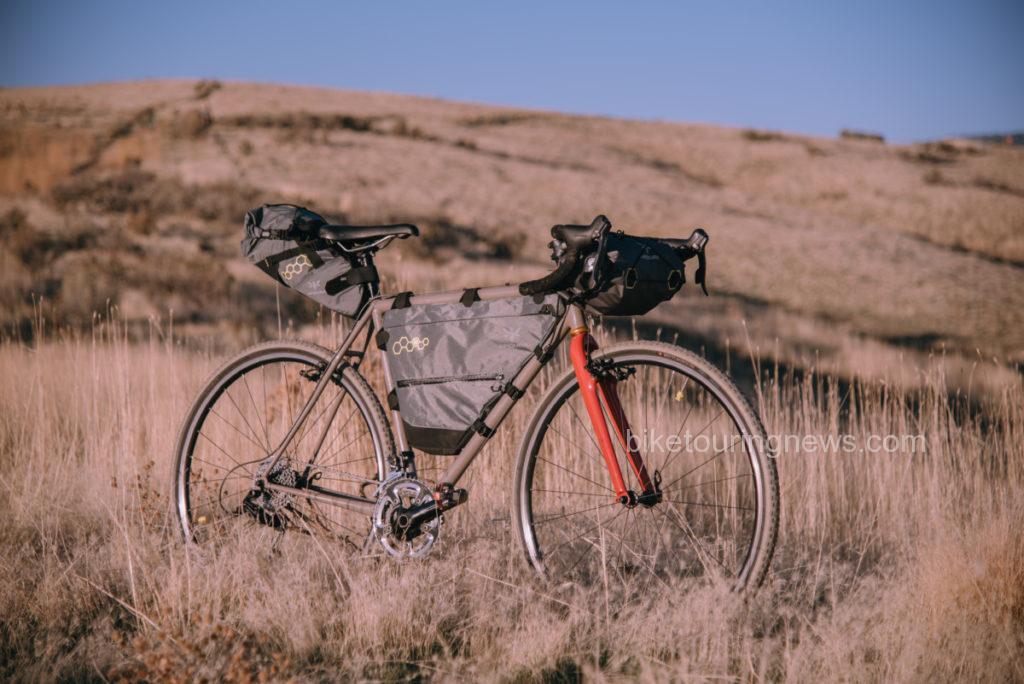
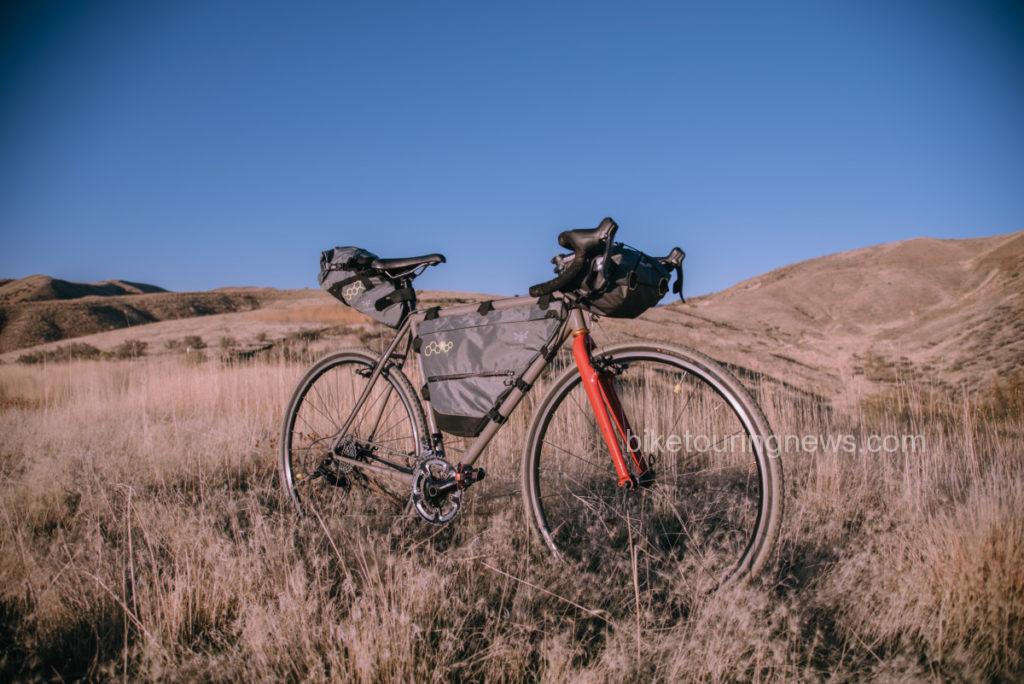
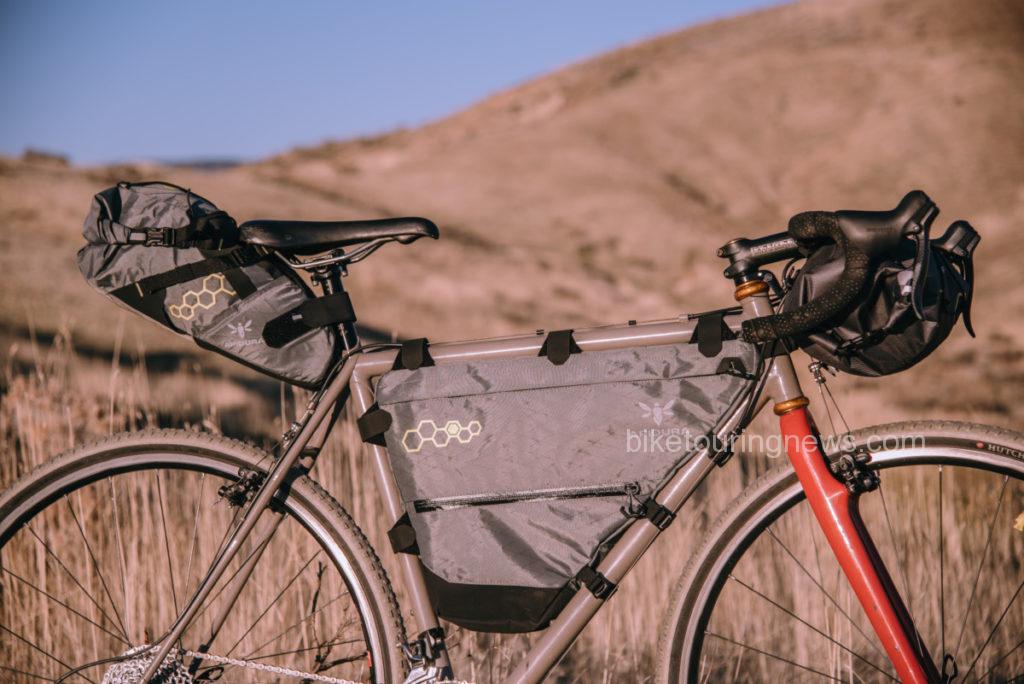
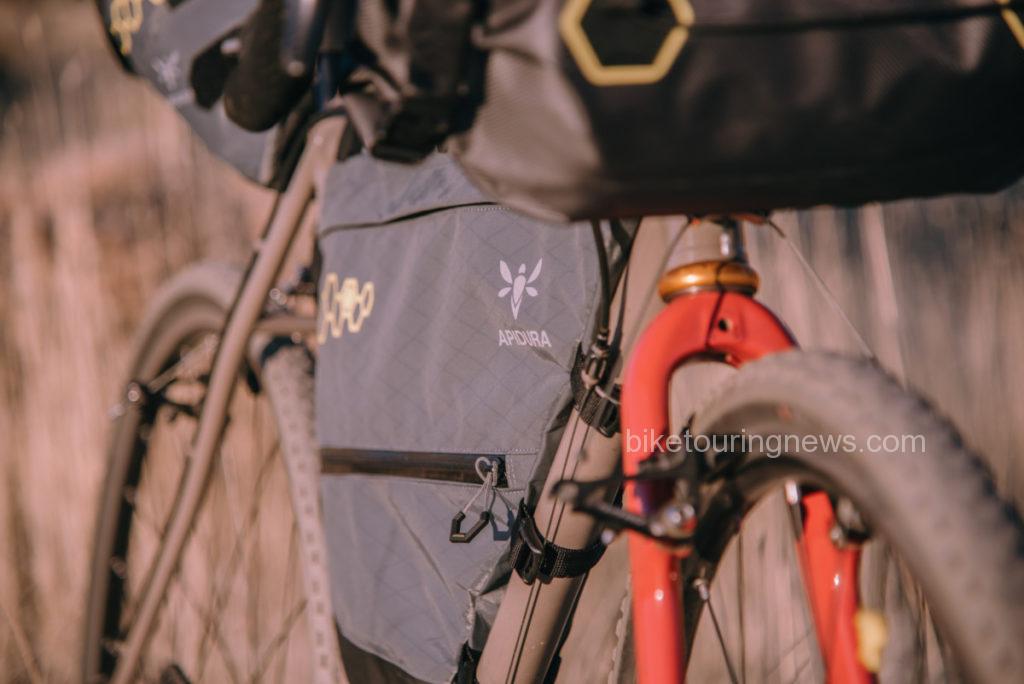
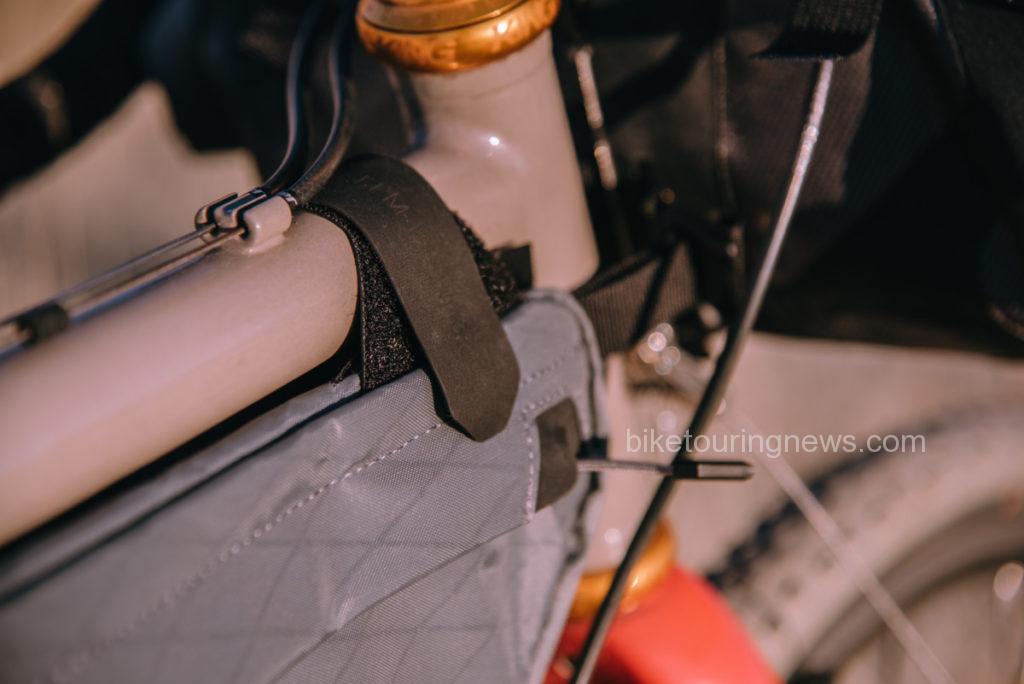
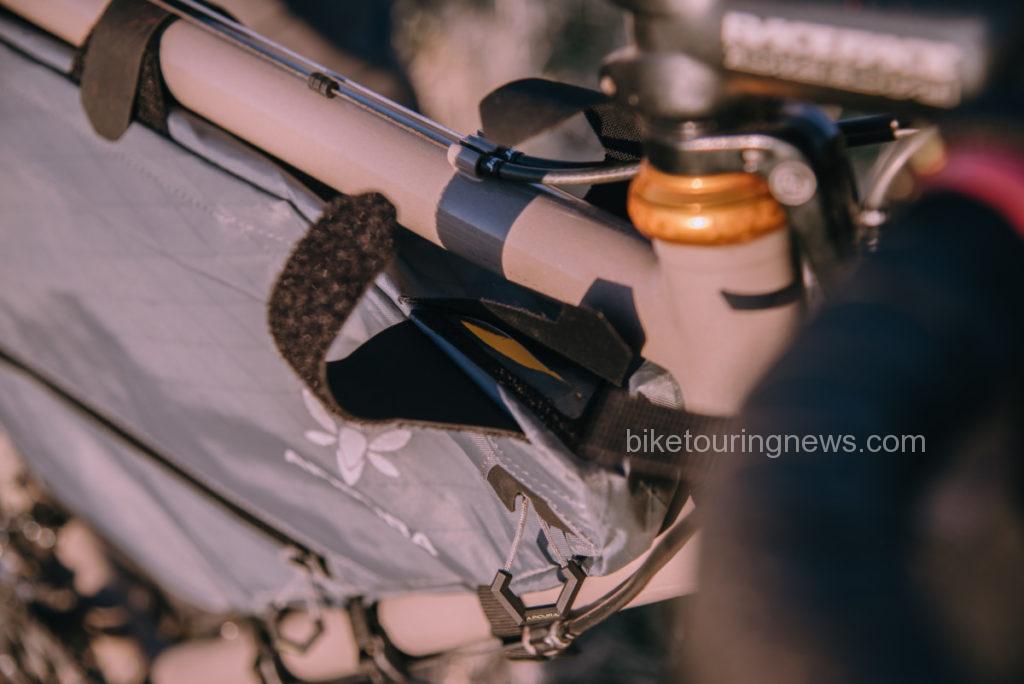
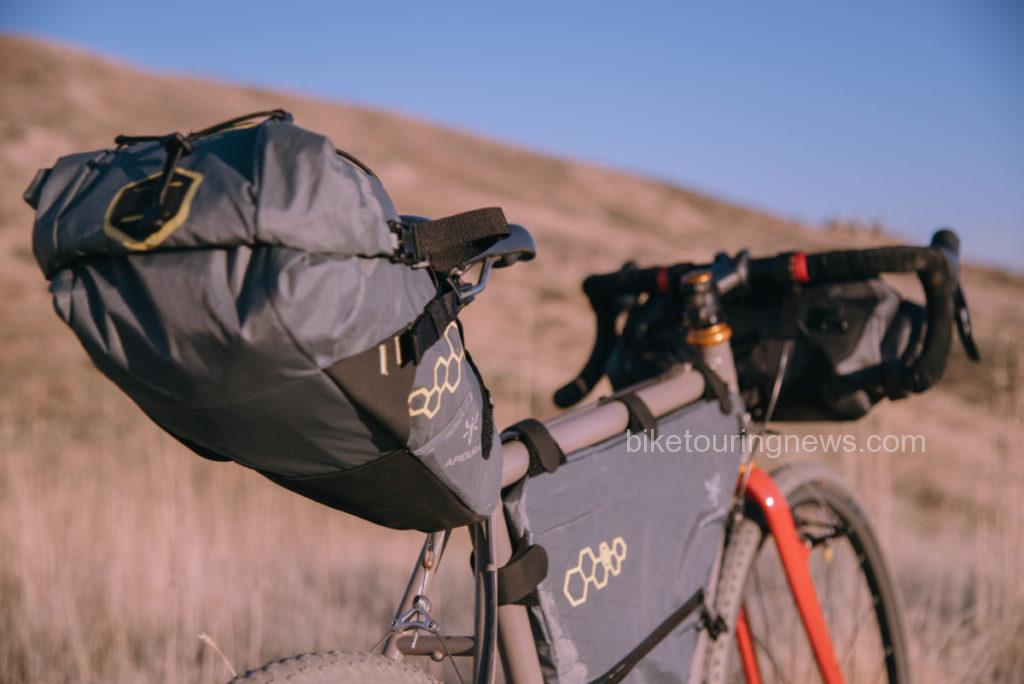
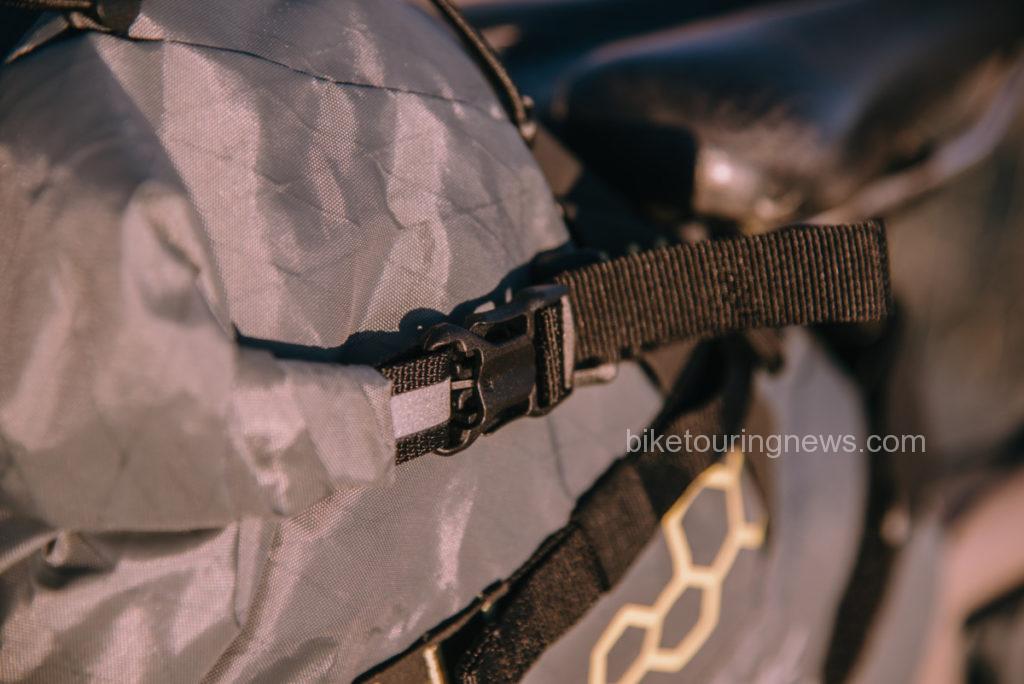
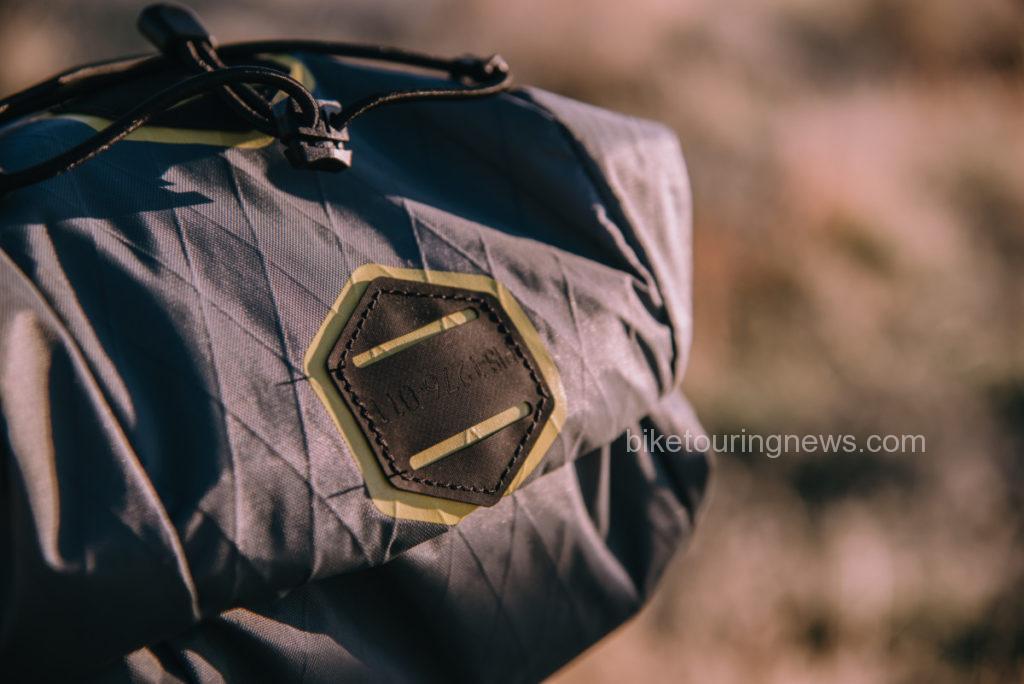
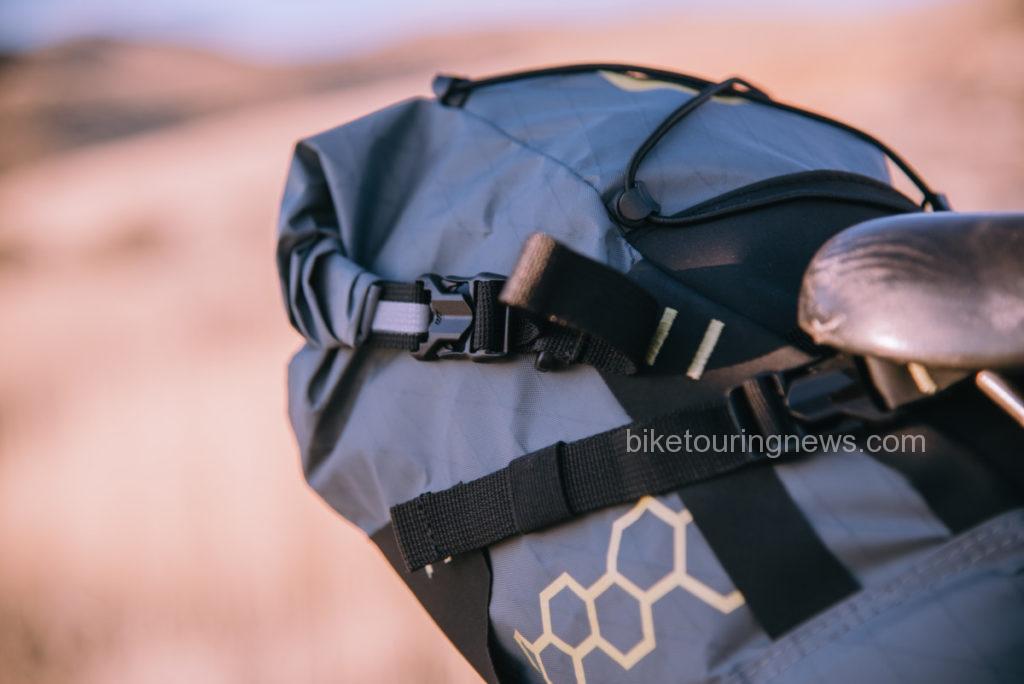
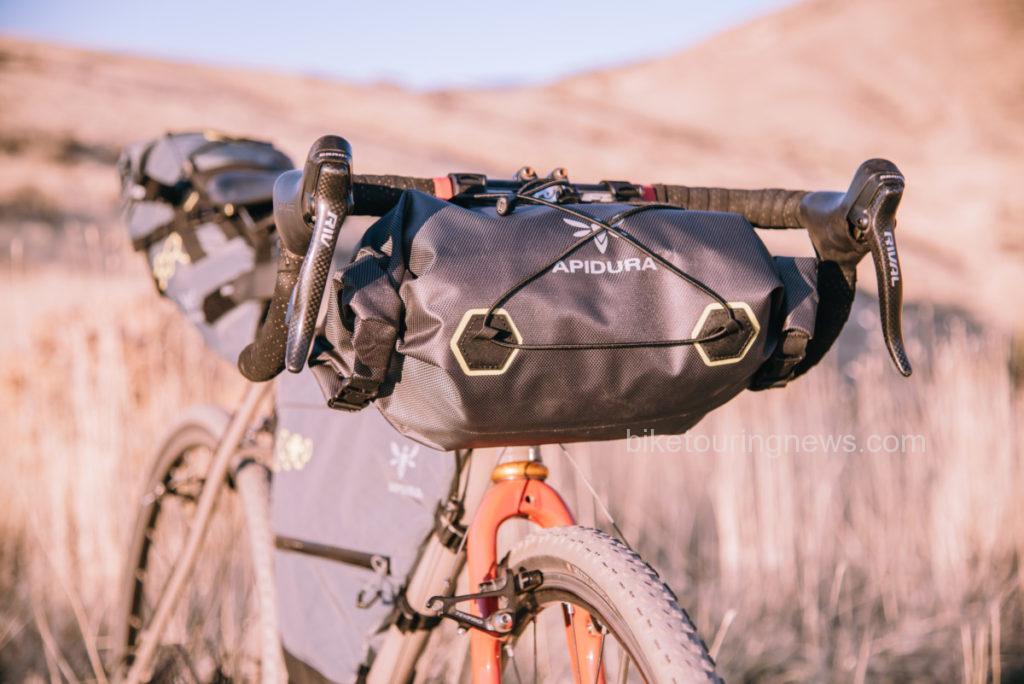
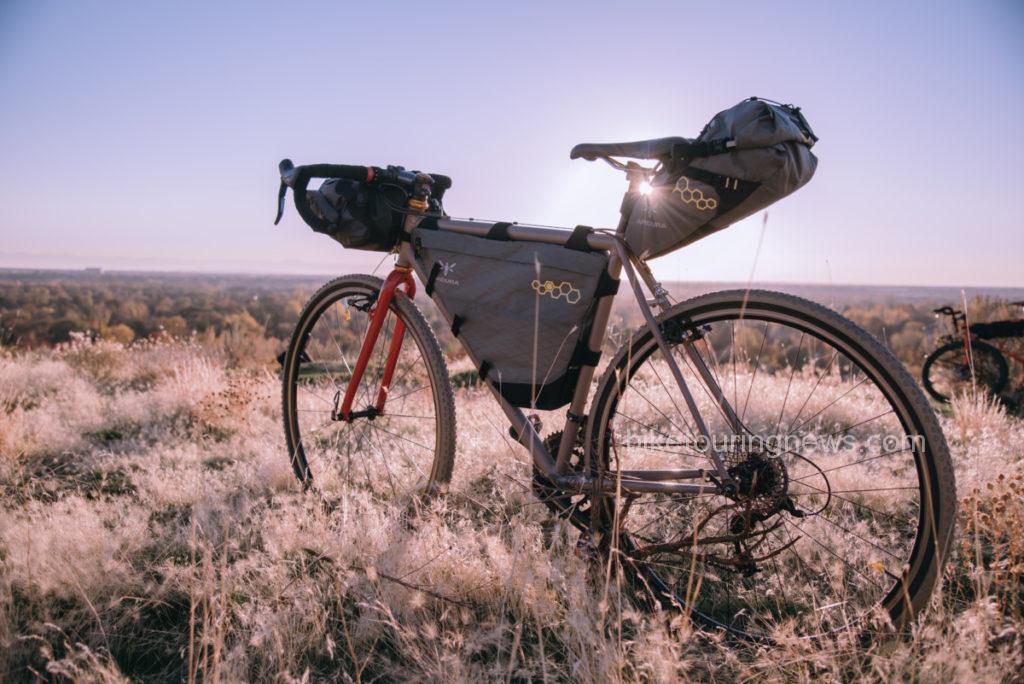
A saddlebag is quite often the perfect bag for bike touring and bike commuting. Low hassle and easy to use.
All photos by @niclaskrake.












Except on the most rugged of trails or in Wilderness areas where mechanized transport is not allowed, a bicycle is the ideal vehicle to transport you and your gear to your favorite fishing locations, especially if you’d rather escape from the crowds! The hassle of finding a suitable place to park a truck on narrow, rugged roads allows the pedal-powered angler to access spots that motorized fisherfolk often overlook. They’re too busy looking for a turnout big enough for their massive pickup! Many streams have singletrack trails running alongside and there are countless lakes and ponds accessible only by bike or on foot. If you prefer solitude to fishing conditions resembling the lunch line at Burger King, bikefishing is for you.
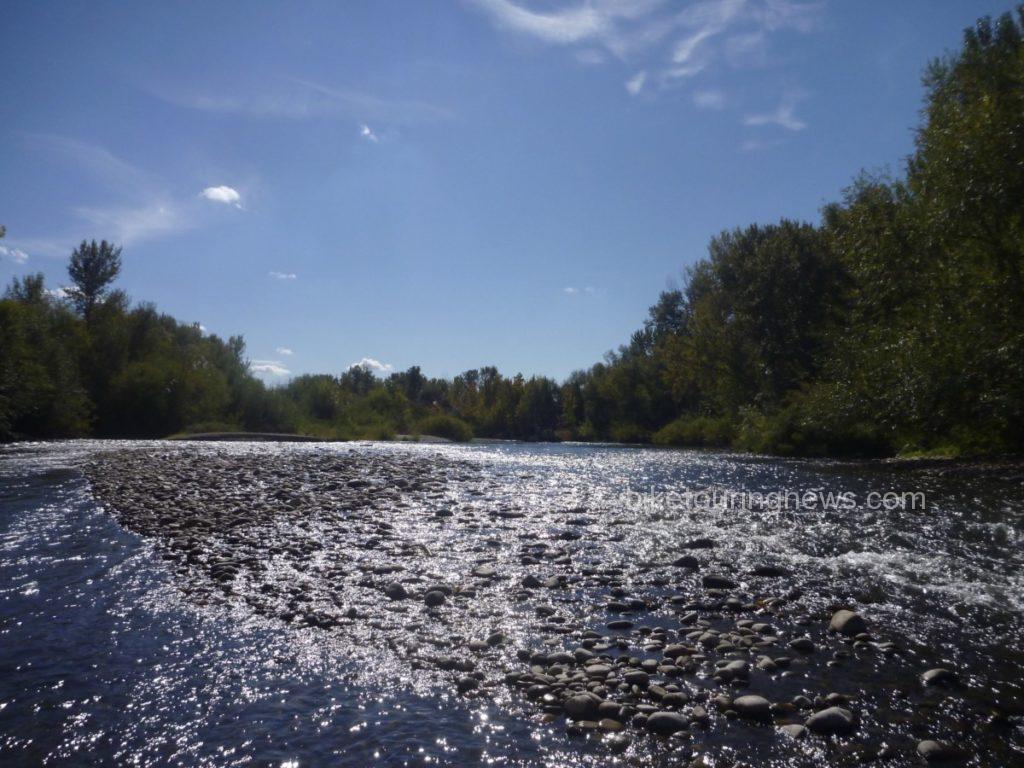
For me, fishing and bike riding have always gone hand-in-hand. In fact, I was first motivated to pick up a fly rod by an experience I had on a bikepacking trip soon after moving to the Gem State. I was pedaling my loaded bike on a backcountry dirt road paralleling one of central Idaho’s sparkling freestone streams. Trout were easy to spy as I gazed down from road level into the riffles below. Why wasn’t I down there in that beautiful river catching those fish!? Since then, I’ve spent countless hours searching for fish in big rivers, small streams, alpine lakes and urban reservoirs by bicycle, on foot and occasionally with the aid of motor vehicles. In this post, I’ll share some helpful tips from my experience to help you get out and fish by bicycle! Feel free to chime in with your own thoughts and experiences in the comments below.
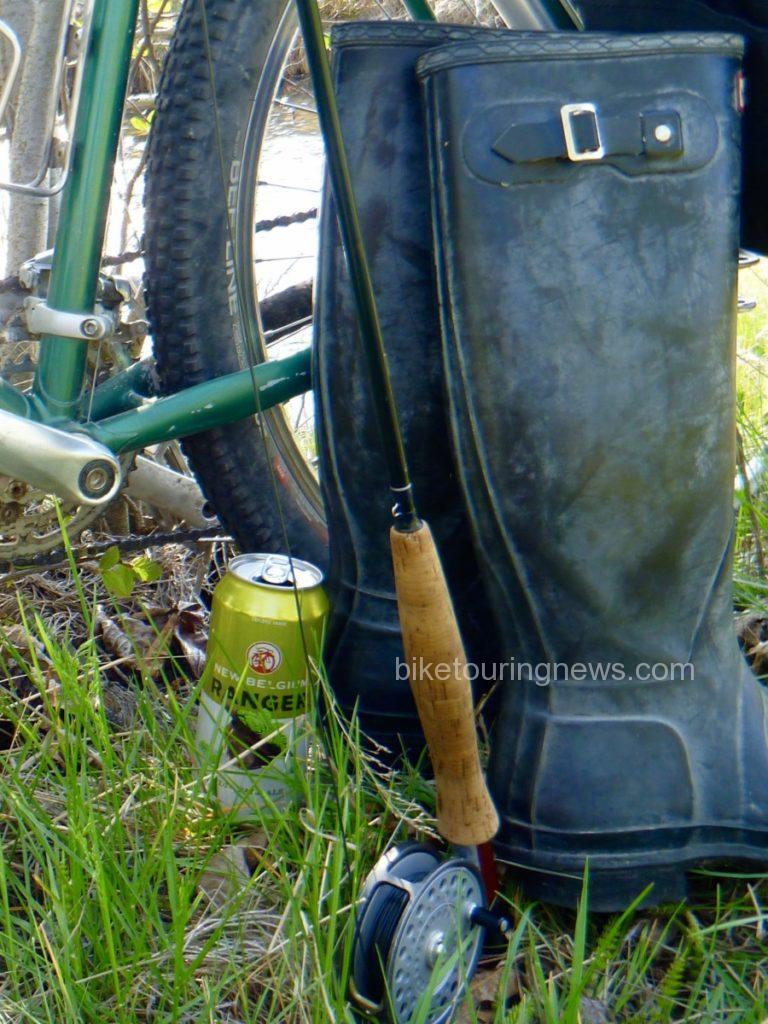
Plan ahead and prepare! The amount of local knowledge and useful information accessible via the internet is a potent weapon in your arsenal. Check fishing and weather reports so you can choose appropriate tackle, clothing and other gear, then leave the rest at home. The USGS monitors water conditions for countless fisheries across the country. Water temperature, level and flow are all useful pieces of information. Local fish and game departments provide a wealth of information about fish stocking and species to expect in a particular piece of water. Many fishing shops and outfitters post regularly-updated fishing reports online. Stop into a local outfitter or fishing shop if you’re traveling far afield. Good research and local knowledge may make the difference between catching one fish after another or getting skunked.
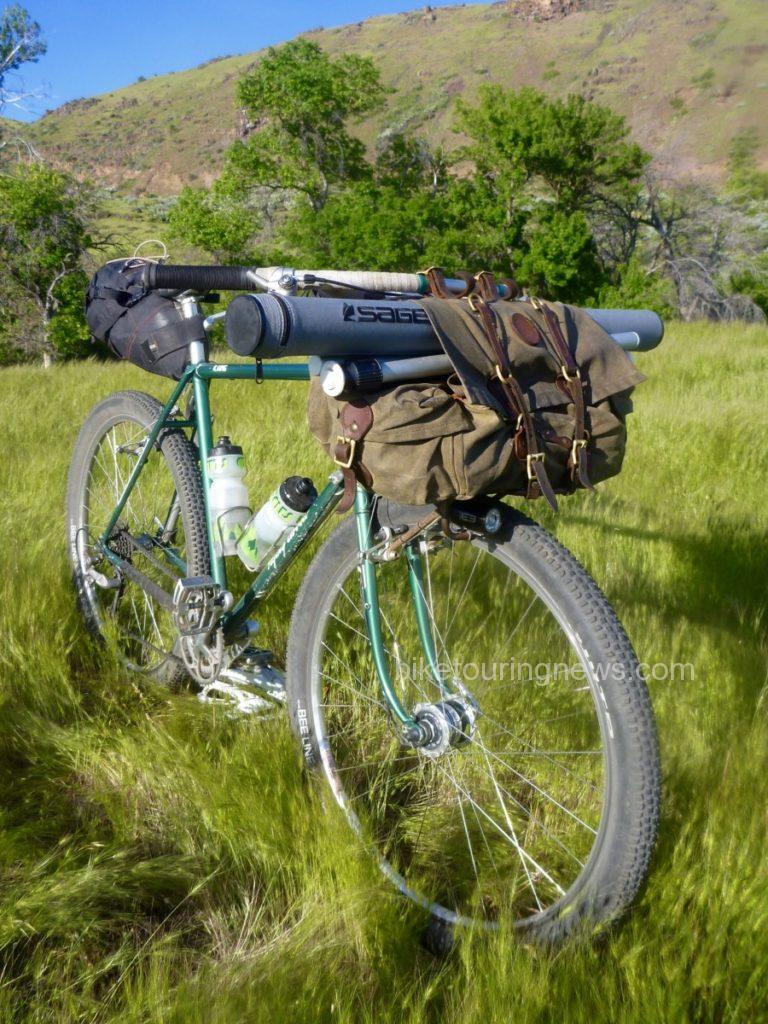
Fishing rods can be challenging items to carry by bike, even when broken down and stored in a tube. Bags with a flap – like Ostrich’s S-2 Saddlebag or Frost River’s Gunflint Trail (see photo above) and Caribou Trail work great. Alternatively, you can use toestraps or Surly’s Junk Straps to lash the tube to the deck of a rack. I would never recommend riding your bike with a fully-assembled rod. You’re just begging for a potentially expensive accident. It is also easy to strap a rod tube to many backpacks. This carrying method works great if you’ll need to do a good deal of walking, hiking or scrambling to access your fishing location. Otherwise, I prefer to ditch the backpack and let the bike carry the load.
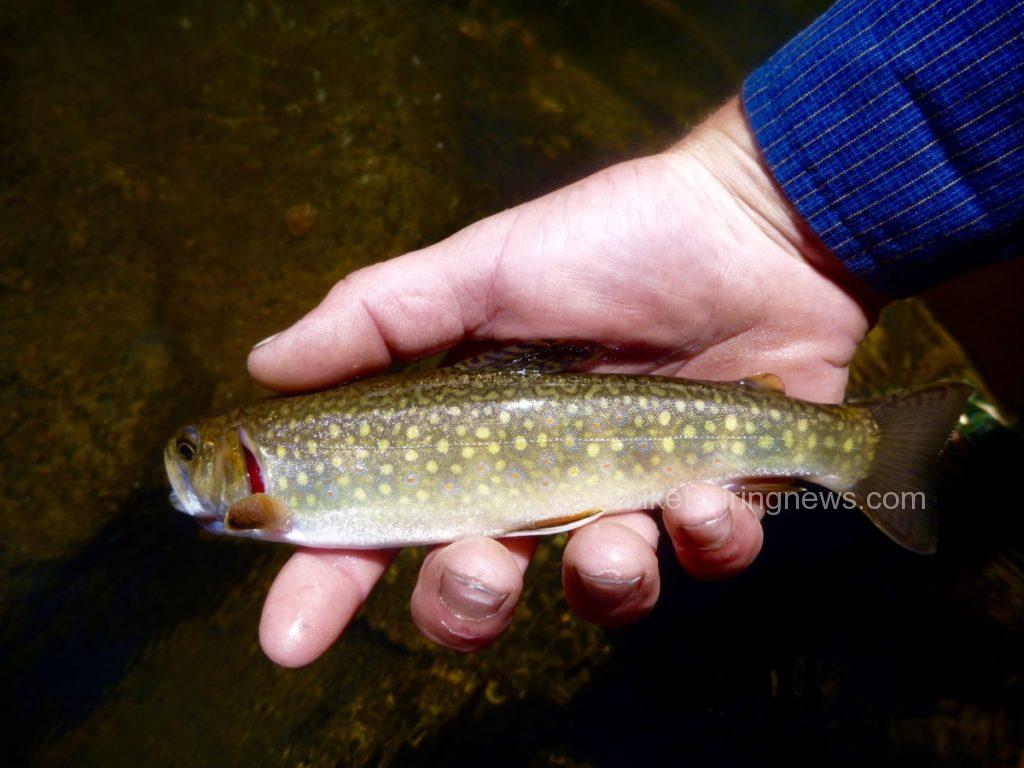
Do you really need multiple rods, reels, lines, a vest packed with gadgets and fly boxes with every imaginable imitation to catch fish? Simplify, simplify. You can’t just chuck your entire collection of outdoor gear in the back of the Subaru! Space and weight are key considerations when fishing by bike. While unnecessary gear will weigh you down and clutter your experience, you don’t want to leave critical equipment at home. Tenkara rods may offer the ultimate in a simple fishing outfit. With no reel and a featherweight telescopic rod that collapses into its 20″ handle, these fishing outfits are ideal equipment for the adventurous angler.
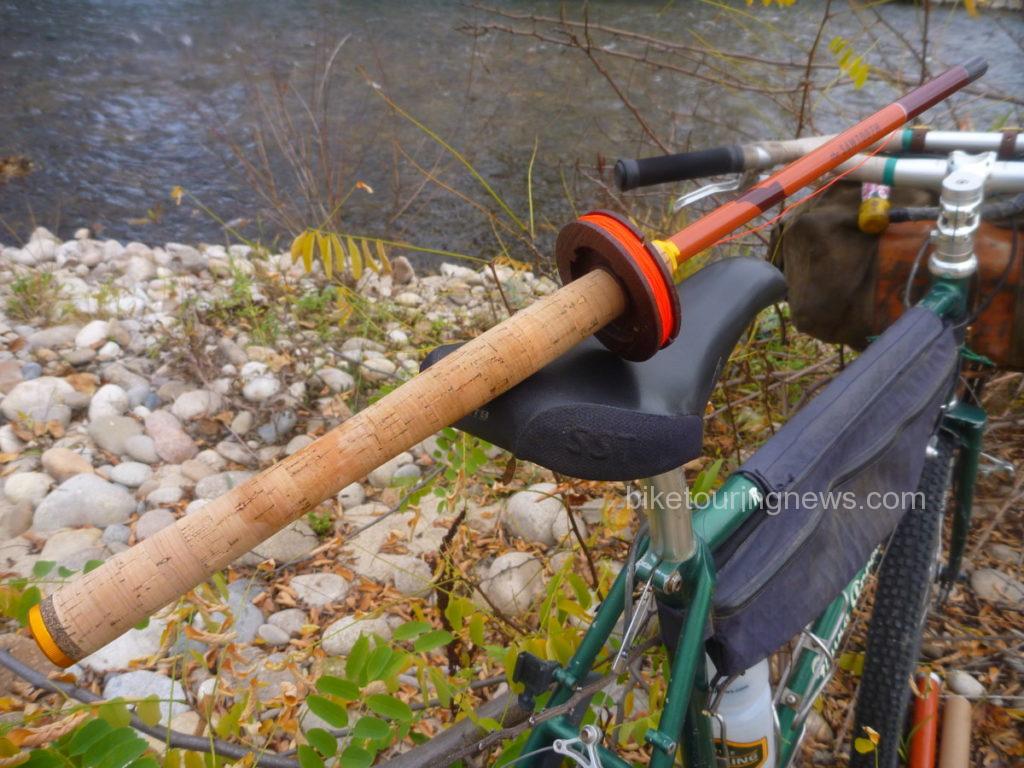
Waders and wading boots are the bulkiest, heaviest and most cumbersome pieces of gear in most anglers’ closets. Leave them at home unless you really need them. Fishing from the bank is a great option and may even be preferable. The long reach afforded by Tenkara rods is a big advantage in this situation. If you choose to wade in warm conditions, wet wading can be a real joy and big part of the fun. Sturdy sandals, Crocs or water shoes work fine for footwear. Even on the hottest days, neoprene socks or booties help you fish longer by keeping your feet warm and preventing irritating debris from getting next to your skin. When the mercury dips, you’ll definitely want to stay dry. Fish from the banks, wear rubber boots or consider bringing those waders along. Wear heat-retaining layers to stay warm in the chilly water. You don’t have a heated vehicle to retreat to if you get chilled, so don’t forget to layer up and bring spare dry, insulating layers in case you take an unexpected dunking!
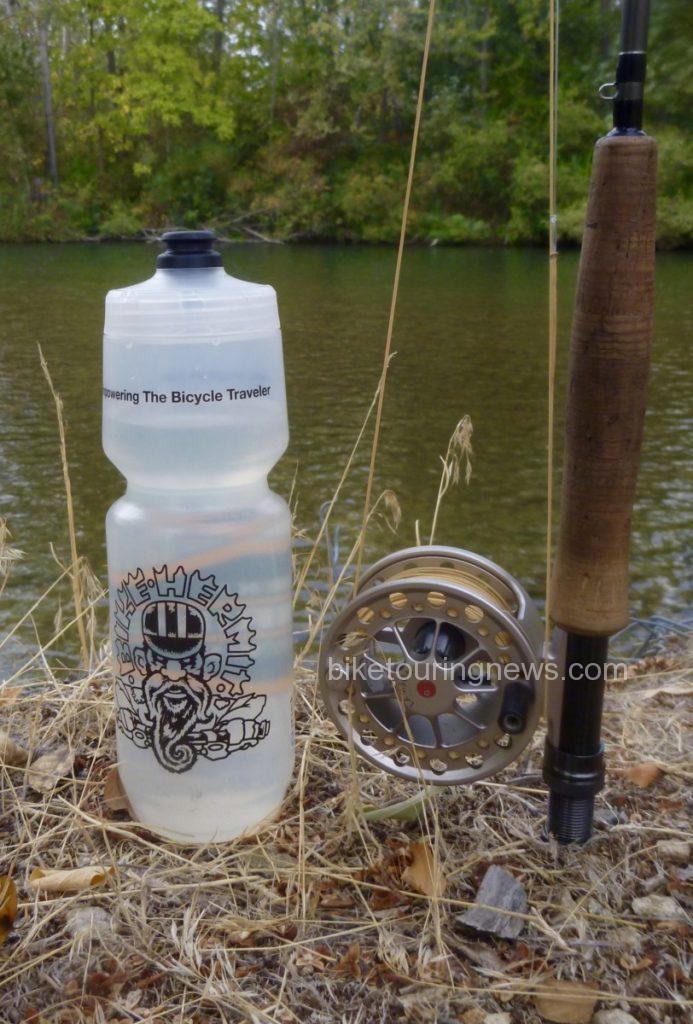
While pedaling from home on a bike loaded with everything you need for a day, week or month of human-powered travel and fishing adventure sounds like a great idea, it isn’t always practical or possible. If you have access to a vehicle, take advantage! Drive out with your bike and gear, find a place to park or camp and strike out on the bike from there. Though perhaps not as idealistically appealing, this approach can deliver the best of both worlds. Who doesn’t like to return to a well-appointed campsite with a dry change of clothes, fully-stocked cooler and comfortable chair after a long day on the river? If the fishing – not the riding – is your main focus this may be the ideal approach.
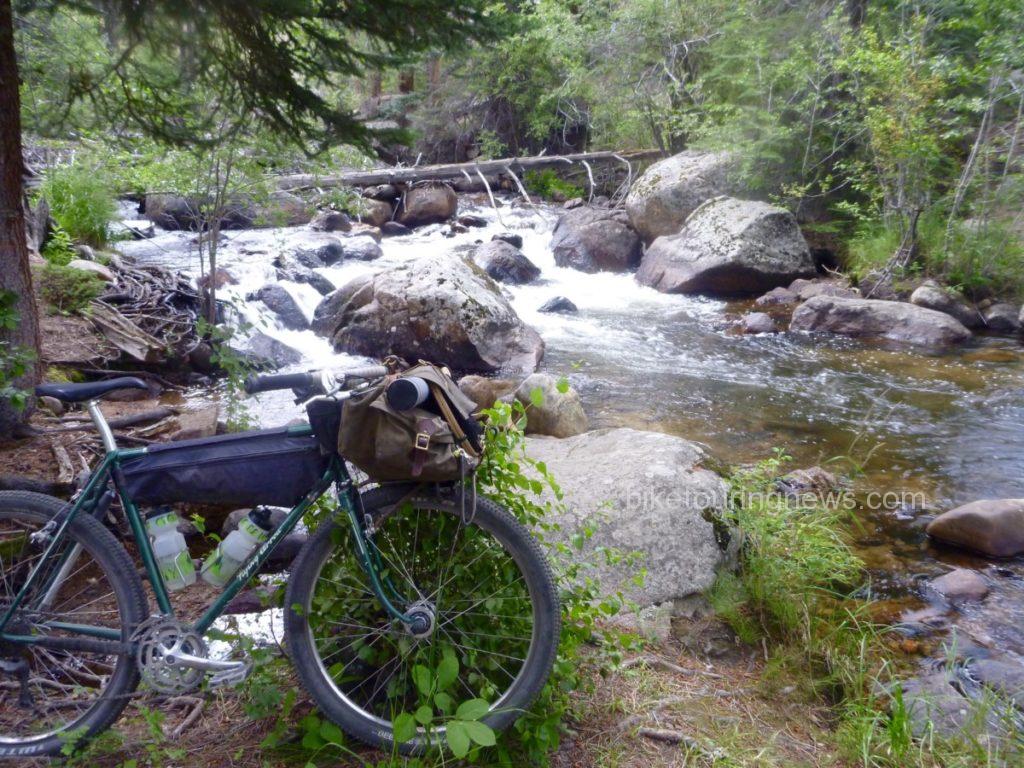
Fishing is unpredictable, so don’t get disappointed if you don’t find immediate success. Like the old bumper sticker says, “a bad day of fishing is still better than a good day at work!” Approach each situation with an open mind and don’t be afraid to try new, different or unorthodox techniques. The bike also gives you practically unlimited access to water far off the beaten track, so explore those side streams, tributaries and hidden pools. Small fish often represent big success!
I hope you’ll find these tips helpful and get out on your bike for a day of fishing soon! Did I forget anything? Share your #bikefishing ideas and experiences in the comments section below. Thanks for reading! Now get away from that screen and #getoutandfish!
The Ostrich S-2 saddlebag is a traditional canvas saddlebag meant to be attached to the loops built into the rear of most leather saddles. These are made in Japan; “Excellent Equipment of Pack and Carrying Gear for All Cyclists at Heart” Nice! It has been discovered, although not by me, that this bag also fits on Jones Loop Bars as if it were made for them.
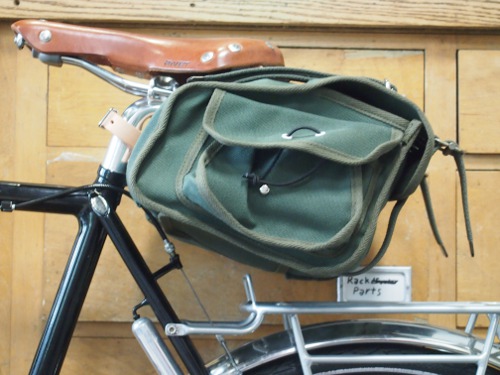
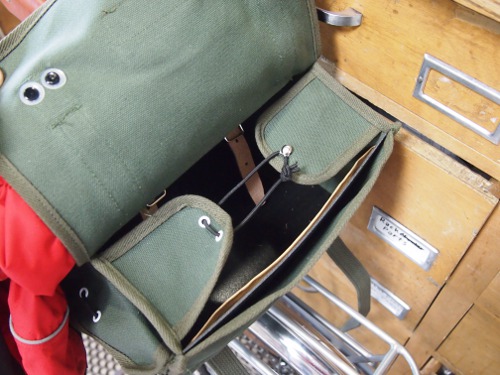
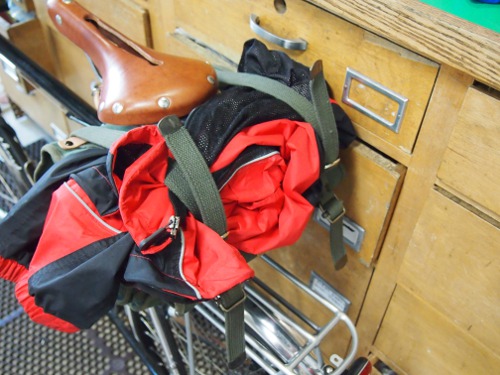

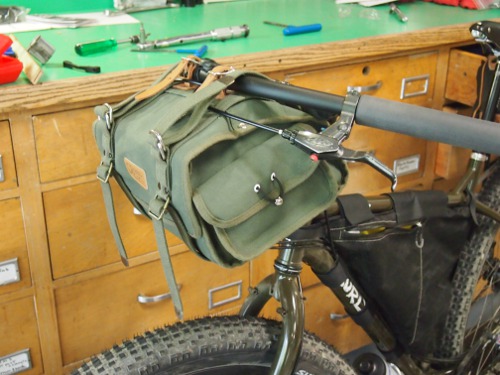
Bike Touring News carries the full line of Revelate Designs products (when we can get them; these things are popular and, since they are all made in the US on a relatively small scale, sometimes they are out of stock). We are also one of four Authorized On-Line Dealers in the U.S.
Revelate Designs “are innovators and builders of the highest quality bikepacking and adventure cycling gear available anywhere. Alaska born and 100% Made in USA“. This is bike gear that is designed for rackless lightweight touring, bikepacking, bike camping and expedition touring. Many customers use individual bags, such as the Mountain Feedbag or the Gas Tank, to complement their traditional pannier setup for touring.
A couple of years ago I wrote this blog post featuring Eric Parson’s trip on the Lost Coast of Alaska in 2008. Eric is the founder of Revelate Designs (which was originally called Epic Designs).
Last year at Interbike in Las Vegas we spoke to Eric and recorded this interview:
In this video I describe some of the features of the bags and talk about how they are designed to fit on the bike. The benefits of the modular concept of this system become apparent when one starts combining bags to create a bikepacking setup; the various bags fit without interfering with one another, plus bags can be removed or added depending in the length and/or duration of the current trip under consideration. And- this is where Eric’s structural engineering background becomes evident- the incorporated stiffeners and straps create a very solid and sway free coupling to the bike.
For people with bikes which are not designed to be fitted with racks, Revelate Designs frame bags can be a good way to increase the bike’s usefulness. Even those with a traditional touring bike and pannier arrangement can always use another place to store food, electronics, jackets, sunglasses, etc.
The new shipment of Frost River bike bags arrived at the Bike Touring News Store last week. Frost River may be better known for their canoe packs than for bicycle touring bags but both should be held to the same standard –
“Canoe packs are built for a very specific task (hauling the stuff that will sustain you) in a very specific environment (the Northern Wilderness). In this setting, things like a seam ripping or a sidewall tearing or a strap breaking—little failures that would be an annoyance in everyday life—come with huge consequences.”
-And so it goes for bike touring.
Frost River makes their bags in Duluth Minnesota from materials sourced in the USA.
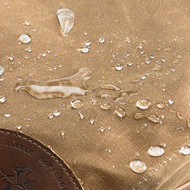
The waxed cotton canvas comes from Fairfield Textiles and is called Martexin Original Wax. The fabric is claimed to have a lifelong resistance to inclement weather as well as being naturally breathable. The hand is not course or stiff even though the canvas is stout. It is evident that the material is impregnated with wax rather than simply coated.
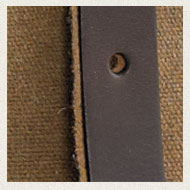
The leather in the straps and reinforcements comes from S.B. Foot Tanning Co. in Red Wing MN. Yes, that Red Wing. I currently have two pairs of Red Wing shoes and it’s sort of neat to know the leather in my bike bag comes from the same source!
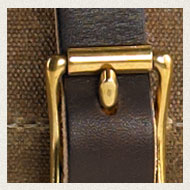
All the buckles, snaps, slides and d-rings are solid brass, not simply plated. And they are big. They might almost appear clunky to some but when fumbling with cold fingers and/or in the dark I think I will appreciate the large size.
The Gunflint Trail is the larger of the two traditional style “transverse” saddlebags from Frost River and it is big. The stated capacity is 20.6 liters but it seems larger…..maybe that doesn’t include the side pockets. And, while this bag could be used without a rack support, it sits very nicely on the Nitto R15 or R14 Top Rack.
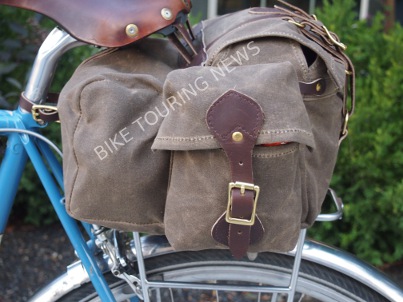
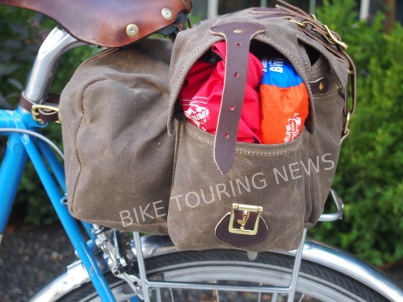

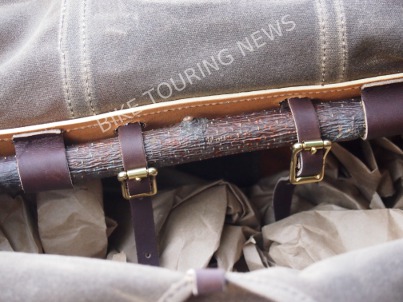
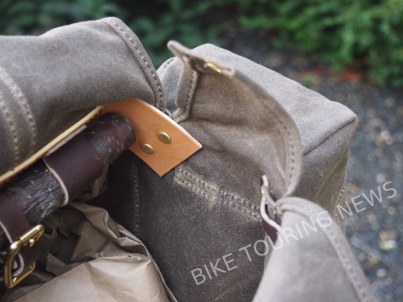
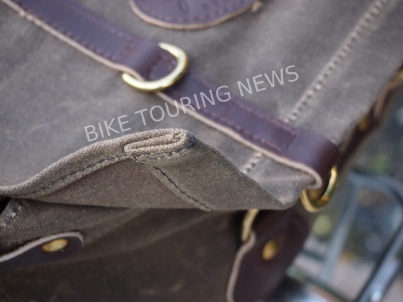

The Caribou Trail bag is an 8.8 liter capacity bag without side pockets. It works as a saddlebag but can also be strapped to the handlebars. A support such as the Nitto R10 rear bag supporter will keep the bag a little proud of the saddle and might prevent any unwanted side to side swaying.

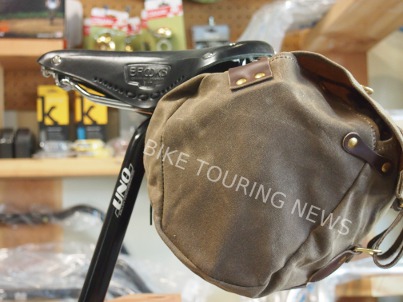
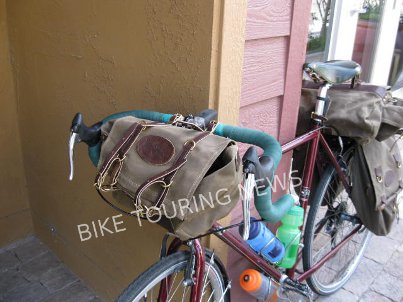
There are dozens of videos out there about changing a flat tire. None with background music by Sonny Stitt. Here’s one!
A couple of things. Notice that I just lay the bike on it’s side with the derailleur up. That’s an easy way to do it when you’re on the side of the road. Also, I shift the chain into the smallest cog. When I put the tire back on it’s easy to remember what cog to put the chain over so that the wheel will be centered.
This is what I carry on the bike to change a flat:
Pump. I use a Zefal HPX frame fit pump. This pump is all aluminum and the barrel is long enough to push a decent amount of air, so the tire is up to pressure relatively quickly. Plus, unlike CO2 pumps, it has never failed or frozen. It mounts to the underside of the top tube
on bikes that have a pump peg.
Or it can be mounted in front of the seat tube, but this precludes the use of a water bottle there.
Spare tube, tire levers and patch kit. The simplest and quickest way to fix a flat is to change the tube. But I only want to carry one spare and if I get another flat I need to be able to patch one of the flat tubes.
Seat bag. For shorter day rides I use a Zimbale leather saddle bag to carry these items plus a multi tool.